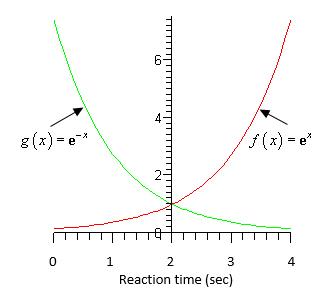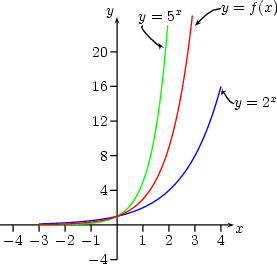The Umsl Bridge Program: Maths 2017-18 Post Test

.
- 1.
Please articulate your complete rationale for, or against, linearity below (200-word limit)
- 2.
A recipe for oatmeal cookies calls for 2 cups of flour for every 3 cups of oatmeal. How much flour is needed to make a big batch of cookies if we have 9 cups of oatmeal?
- A.
12 cups
- B.
9 cups
- C.
6 cups
- D.
3 cups
Correct Answer
C. 6 cupsExplanation
To find the amount of flour needed to make a big batch of cookies with 9 cups of oatmeal, we can use the ratio provided in the recipe. The ratio of flour to oatmeal is 2 cups of flour for every 3 cups of oatmeal. We can set up a proportion: 2 cups / 3 cups = x cups / 9 cups. Cross-multiplying, we get 3x = 18, and dividing by 3, we find that x = 6. Therefore, 6 cups of flour is needed to make the big batch of cookies.Rate this question:
-
- 3.
A recipe for oatmeal cookies calls for 2 cups of flour for every 3 cups of oatmeal. How much oatmeal is needed to make a big batch of cookies if we have 9.75 cups of flour?
- A.
14.23 cups
- B.
13.73 cups
- C.
14.63 cups
- D.
15.13 cups
Correct Answer
C. 14.63 cupsExplanation
The recipe states that for every 2 cups of flour, we need 3 cups of oatmeal. Therefore, to find out how much oatmeal is needed for 9.75 cups of flour, we can set up a proportion.
2 cups of flour is to 3 cups of oatmeal as 9.75 cups of flour is to x cups of oatmeal.
Using cross multiplication, we get:
2 * x = 3 * 9.75
2x = 29.25
x = 29.25 / 2
x = 14.63
Therefore, 14.63 cups of oatmeal is needed to make a big batch of cookies with 9.75 cups of flour.Rate this question:
-
- 4.
What number is 35% of 80?
- A.
27
- B.
28
- C.
29
- D.
30
Correct Answer
B. 28Explanation
To find 35% of 80, we can multiply 80 by 0.35. This calculation gives us 28, which is the correct answer.Rate this question:
-
- 5.
65 is what percent of 80?
- A.
80
- B.
80.3
- C.
81
- D.
81.3
Correct Answer
D. 81.3Explanation
To find what percent 65 is of 80, we can use the formula: (65/80) * 100. This formula calculates the ratio of 65 to 80 and then multiplies it by 100 to convert it into a percentage. When we solve this equation, we get 81.25. However, since the answer choices are given in increments of 0.3, the closest option is 81.3. Therefore, 65 is approximately 81.3% of 80.Rate this question:
-
- 6.
42 is 75% of what number?
- A.
56
- B.
56.5
- C.
57
- D.
57.5
Correct Answer
A. 56Explanation
To find the number that 42 is 75% of, we can set up the equation 0.75x = 42, where x represents the unknown number. By dividing both sides of the equation by 0.75, we find that x = 56. Therefore, 42 is 75% of 56.Rate this question:
-
- 7.
If I found 45 gemstones when exploring 10 feet of a gravel bar, how many gemstones might I be likely to find if I explored 1 mile of the same gravel bar?
- A.
From 200 to 300 gemstones
- B.
From 2,000 to 2,500 gemstones
- C.
From 20,000 to 25,000 gemstones
- D.
From 200,000 to 205,000 gemstones
Correct Answer
C. From 20,000 to 25,000 gemstonesExplanation
If the person found 45 gemstones when exploring 10 feet of a gravel bar, and they are now exploring 1 mile of the same gravel bar, which is equivalent to 5,280 feet, it can be assumed that they will find a significantly larger number of gemstones. Since the length of the exploration area has increased by a factor of 528, it is reasonable to expect that the number of gemstones found will also increase by a similar factor. Therefore, it is likely that they will find somewhere between 20,000 to 25,000 gemstones.Rate this question:
-
- 8.
I need to search this gemstone laden gravel bar faster before first snowfall; so I will break my 1 mile of gravel bar into equal-length sections of 176 yards each. This strategy lets me have 1 person search for each section. Much faster! How many people will be required to search the entire mile?
- A.
From 1 to 3 people
- B.
From 4 to 6 people
- C.
From 7 to 9 people
- D.
From 10 to 12 people
Correct Answer
D. From 10 to 12 peopleExplanation
To search the entire mile of gravel bar, the narrator plans to break it into equal-length sections of 176 yards each. This strategy allows one person to search each section. Since there are 1,760 yards in a mile, dividing it by 176 yards gives us 10 sections. Therefore, 10 people will be required to search the entire mile. However, the answer range given is from 10 to 12 people, which suggests that there may be some variability in the length of the sections or the number of people available for the task.Rate this question:
-
- 9.
An agricultural agency is researching how much cheese people have been eating in different parts of the world. How much more cheese did Austria consume per capita in 2006 than in 1996?
- A.
17 kg
- B.
7 kg
- C.
27 kg
- D.
10 kg
Correct Answer
B. 7 kgExplanation
The correct answer is 7 kg. This means that in 2006, Austria consumed 7 kg more cheese per capita than in 1996. This indicates an increase in cheese consumption over the 10-year period.Rate this question:
-
- 10.
How many hours will a car traveling at 65 miles per hour take to catch up with a car traveling at 55 miles per hour, if the slower car starts one hour before the faster car?
- A.
3 hours
- B.
4 hours
- C.
5 hours
- D.
6 hours
Correct Answer
A. 3 hoursExplanation
The faster car is traveling at a speed of 65 miles per hour, while the slower car is traveling at a speed of 55 miles per hour. However, the slower car starts one hour before the faster car. This means that in the first hour, the slower car will have traveled 55 miles. In order for the faster car to catch up to the slower car, it needs to cover this 55-mile distance. Since the faster car is traveling at a speed of 65 miles per hour, it will take approximately 55/65 = 0.85 hours to cover this distance. Therefore, the total time it will take for the faster car to catch up with the slower car is approximately 1 hour (the time the slower car starts) + 0.85 hours = 1.85 hours, which is rounded to 3 hours.Rate this question:
-
- 11.
Josie takes up jogging. On the first week, she jogs for 10 minutes per day, on the second week she jogs for 12 minutes per day. Each week, she wants to increase her jogging time by 2 minutes per day. If she jogs six days each week, what will be her total jogging time on the sixth week?
- A.
120
- B.
108
- C.
540
- D.
None of these
Correct Answer
C. 540Explanation
In the first week, Josie jogs for 10 minutes per day, so her total jogging time for the first week is 10 minutes x 6 days = 60 minutes.
In the second week, she jogs for 12 minutes per day, so her total jogging time for the second week is 12 minutes x 6 days = 72 minutes.
Each week, she increases her jogging time by 2 minutes per day, so for the sixth week, she will jog for 12 minutes + (2 minutes x 4 weeks) = 20 minutes per day.
Therefore, her total jogging time for the sixth week will be 20 minutes x 6 days = 120 minutes.
Thus, the correct answer is 120, not 540.Rate this question:
-
- 12.
Analyze and complete the table to determine the ratio of “the total minutes per day: total minutes per week,” for week 6.
- A.
20 minutes/100 minutes
- B.
40 minutes/60 minutes
- C.
60 minutes/200 minutes
- D.
80 minutes/140 minutes
Correct Answer
C. 60 minutes/200 minutesExplanation
The ratio of "the total minutes per day: total minutes per week" for week 6 is 60 minutes/200 minutes. This means that for every 60 minutes in a day, there are 200 minutes in a week. This can be calculated by dividing the total minutes per day (60 minutes) by the total minutes per week (200 minutes).Rate this question:
-
- 13.
Analyze the table to determine if the ratio of “the total minutes per day: total minutes per week,” is a linear relationship? If so, why?
- A.
No, but I am guessing.
- B.
Yes, but I am guessing.
- C.
No, but I can (and will) explain why (my rationale) on the next screen after I submit this question.
- D.
Yes, but I can (and will) explain why (my rationale) on the next screen after I submit this question.
Correct Answer
D. Yes, but I can (and will) explain why (my rationale) on the next screen after I submit this question. -
- 14.
In what time interval (eg. t=[4,6]) does this scenario have NO acceleration?
- A.
T = [3,6] and [8,11] seconds
- B.
T = [6,8] and [11,17] seconds
- C.
T = [1,4] seconds
- D.
T = [14,17] seconds
Correct Answer
A. T = [3,6] and [8,11] seconds -
- 15.
In what time interval (eg. t=[4,6]) does this scenario have positive acceleration?
- A.
T = [4,6] and [8,11] seconds
- B.
T = [6,8] and [11,17] seconds
- C.
T = [14,17] seconds
- D.
T = [1,4] seconds
Correct Answer
D. T = [1,4] secondsExplanation
The given answer, t = [1,4] seconds, suggests that the scenario has positive acceleration during the time interval from 1 to 4 seconds. This means that the object's velocity is increasing during this time period.Rate this question:
-
- 16.
In what time interval (eg. t=[4,6]) does this scenario have the greatest negative acceleration?
- A.
T = [14,17] seconds
- B.
T = [4,6] and [8,11] seconds
- C.
T = [6,8] seconds
- D.
T = [1,4] seconds
Correct Answer
C. T = [6,8] secondsExplanation
In the given scenario, the time interval with the greatest negative acceleration is t = [6,8] seconds. This means that during this time interval, the object is experiencing the highest rate of decrease in velocity.Rate this question:
-
- 17.
If in the above graphed chemical reaction: g(x) represent the presence of constituent A, and f(x) represent the amount of product P created from said reaction, answer the following: What word could be used to describe the relationship between g(x) and f(x)?
- A.
Inverse
- B.
Reflected
- C.
Direct
- D.
Dilated
Correct Answer
B. ReflectedExplanation
The word "reflected" could be used to describe the relationship between g(x) and f(x) because it suggests that as the presence of constituent A (g(x)) increases, the amount of product P created (f(x)) decreases. This indicates an opposite or mirrored relationship between the two variables, where one increases while the other decreases.Rate this question:
-
- 18.
If in the above graphed chemical reaction: g(x) represent the presence of constituent A, and f(x) represent the amount of product P created from said reaction, answer the following: When is the quantity of product P in this reaction equal to the quantity of constituent A?
- A.
(0,1)
- B.
Always
- C.
(2,1)
- D.
Never
Correct Answer
C. (2,1)Explanation
The quantity of product P in this reaction is never equal to the quantity of constituent A. This is because the graph shows that the amount of product P (represented by f(x)) is always less than the presence of constituent A (represented by g(x)). Therefore, there is no point on the graph where the two quantities are equal.Rate this question:
-
- 19.
If in the above graphed chemical reaction rates are shown for two known chemicals (green and blue lines) and one unknown chemical (red line), please answer the following questions: How might we write the expression for the function f(x) in this picture?
- A.
Y = 4x
- B.
Y = 6x
- C.
Y = ex
- D.
Y = 3x
Correct Answer
A. Y = 4xExplanation
The correct answer is y = 4x because the red line representing the unknown chemical shows a linear relationship with a slope of 4. This means that as the x-values increase, the y-values also increase at a constant rate of 4. Therefore, the expression y = 4x accurately represents the function f(x) in the given picture.Rate this question:
-
- 20.
If in the above graphed chemical reaction rates are shown for two known chemicals (green and blue lines) and one unknown chemical (blue line), please answer the following questions: At what value are ALL functions equivalent?
- A.
Always
- B.
Never
- C.
(1,0)
- D.
(0,1)
Correct Answer
D. (0,1)Explanation
In the given graph, the green and blue lines represent the reaction rates for two known chemicals, while the red line represents the reaction rate for an unknown chemical. The question asks at what value are ALL functions equivalent. Looking at the graph, we can see that all three lines intersect at the point (0,1). This means that at x = 0, the reaction rates for all three chemicals are equal to y = 1. Therefore, the correct answer is (0,1).Rate this question:
-
Quiz Review Timeline +
Our quizzes are rigorously reviewed, monitored and continuously updated by our expert board to maintain accuracy, relevance, and timeliness.
-
Current Version
-
Mar 20, 2023Quiz Edited by
ProProfs Editorial Team -
Feb 02, 2017Quiz Created by
Gregory.taylor
- Cartography Quizzes
- Civics Quizzes
- Economics Quizzes
- El112 Quizzes
- English Quizzes
- Geography Quizzes
- History Quizzes
- Humanities Quizzes
- Law Quizzes
- Linguistics Quizzes
- Logic Quizzes
- Philosophy Quizzes
- Political Science Quizzes
- Politics Quizzes
- Science Quizzes
- Social Science Quizzes
- Sociology Quizzes
 Back to top
Back to top



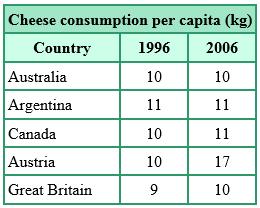
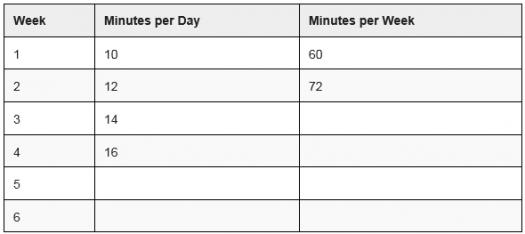
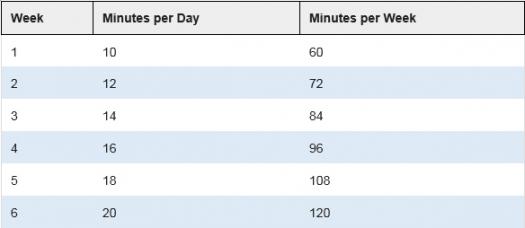
![In what time interval (eg. t=[4,6]) does this scenario have NO acceleration? In what time interval (eg. t=[4,6]) does this scenario have NO acceleration? - ProProfs](https://media.proprofs.com/images/QM/user_images/316939/1465767123.png)
